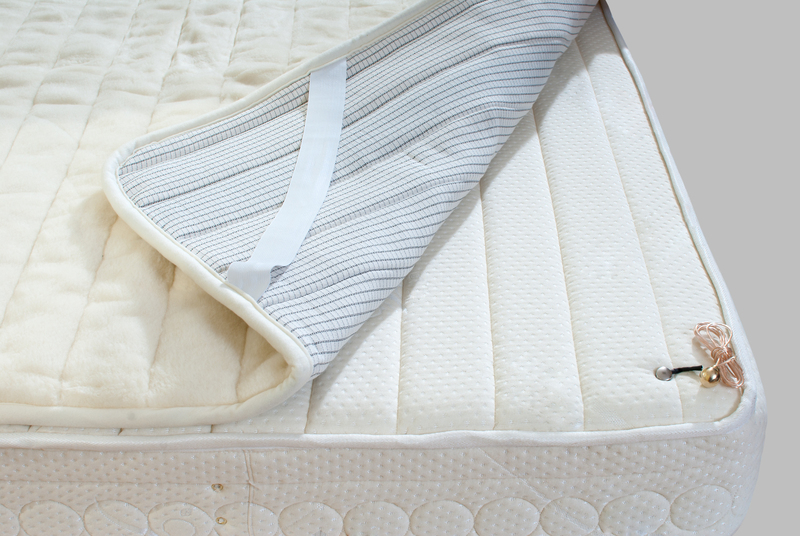Achieve Spotless Window Sills by Removing Mould Thoroughly
Posted on 03/06/2025
Achieve Spotless Window Sills by Removing Mould Thoroughly
Window sills are essential components of any home, providing both aesthetic and practical value. However, they are often susceptible to mould growth due to moisture and condensation. Achieving spotless window sills is only possible if you know how to remove mould thoroughly and prevent it from returning. This comprehensive guide will provide you with all the information you need to tackle this common household problem and maintain a healthy, beautiful living environment.

Understanding Window Sill Mould: What You Need to Know
- Why does mould grow on window sills?
- What are the health risks associated with mould?
- How can you identify mould growth?
Why Does Mould Grow on Window Sills?
Mould thrives in damp, poorly ventilated areas. Window sills are particularly vulnerable because they frequently come into contact with condensation from temperature changes.
Other contributing factors include:
- Lack of ventilation
- Poor insulation
- Exposure to rainwater leaks
Health Risks of Window Sill Mould
Exposure to mould spores can lead to a series of potential health issues, especially for individuals with allergies or asthma. Common symptoms include:
- Coughing
- Sneezing
- Eye irritation
- Skin rashes
Essential Tools and Supplies for Mould Removal
Before you embark on a mission to achieve spotless window sills, you'll need the right tools and cleaning supplies.
Essential items include:
- Protective gloves and goggles
- Face mask
- Soft brush or old toothbrush
- Spray bottle
- Paper towels or clean cloths
- Bucket
- Cleaning solutions (homemade or store-bought)
Step-By-Step Guide: How to Achieve Spotless Window Sills by Removing Mould Thoroughly
Step 1: Prepare the Area
Start by opening the window to improve ventilation. Lay down old towels or plastic sheeting to protect floors and surrounding surfaces from cleaning splashes or falling debris.
Step 2: Wear Protective Gear
Before you begin scrubbing, put on gloves, goggles, and a mask to shield yourself from potential mould spores and harsh cleaning agents.
Step 3: Mix Your Cleaning Solution
You can use commercially available mould removers or homemade alternatives. Some effective DIY solutions include:
- White vinegar: Fill a spray bottle with undiluted white vinegar.
- Baking soda: Mix one teaspoon of baking soda with two cups of water.
- Hydrogen peroxide: Use a 3% solution in a spray bottle.
- Bleach (for non-porous surfaces only): Mix one part bleach with four parts water.
Step 4: Remove Surface Mould
Spray your chosen cleaning solution generously onto the affected window sills. Let it sit for at least 10-15 minutes to penetrate the mould and kill the spores.
Using a soft brush or old toothbrush, scrub away the mould gently, paying special attention to corners and crevices. Repeat as necessary until the visible mould is gone.
Step 5: Wipe and Dry the Surface
Use clean, absorbent cloths or paper towels to wipe off remaining residue. It's essential to remove all moisture from the window sill after cleaning to prevent the mould from returning.
Step 6: Dispose of Cleaning Materials Properly
Seal used cloths and paper towels in a plastic bag and throw them away. Clean all brushes or reusable products in hot soapy water before storing them for future use.
Step 7: Inspect and Repeat if Needed
If stubborn patches remain, repeat steps 3-5. Persistent or recurring mould may indicate a deeper moisture problem requiring further investigation.
Preventing Future Mould on Window Sills
Once you have successfully removed mould from your window sills, preventing its recurrence is vital. Prevention strategies include:
- Keep window sills dry: Wipe down sills regularly, especially after rain or on humid days.
- Improve ventilation: Open windows, use extractor fans, or install air vents to lower humidity.
- Upgrade insulation: Well-insulated windows reduce condensation and create an inhospitable environment for mould growth.
- Consider dehumidifiers: These are particularly helpful in damp-prone rooms such as bathrooms or kitchens.
- Fix leaks promptly: Repair any faulty seals, cracked panes, or structural issues to prevent water ingress.
Eco-Friendly Solutions for Mould Removal
Many homeowners seek environmentally friendly options to remove mould from window sills. Vinegar and baking soda are popular choices due to their effectiveness and minimal environmental impact. Here's how you can use them:
- Vinegar: Its mild acidity breaks down mould at a cellular level. Spray and leave to sit before wiping.
- Baking Soda: A natural cleaning agent that also helps in deodorizing. It can be sprinkled onto damp sills and scrubbed with a brush.
These methods are safe for children and pets and won't harm surfaces. For tougher jobs, hydrogen peroxide offers more cleaning power while still being safer than bleach.
When to Call a Professional Mould Removal Service
While DIY methods often work well for minor outbreaks, certain situations require professional intervention to achieve truly spotless and mould-free window sills:
- The mould covers a large area (greater than one square metre).
- It keeps returning despite repeated cleaning.
- The window sills or frames show signs of rot or structural damage.
- Family members experience ongoing health problems possibly related to mould exposure.
Frequently Asked Questions about Window Sill Mould Removal
- Can I paint over mould on my window sills?
No. Painting over mould will not solve the problem and may cause paint to peel. Always remove all mould and allow the area to dry fully before repainting. - How often should I clean my window sills?
Regular cleaning every 1-2 weeks is recommended, especially during damp or humid weather. - Which cleaning products are most effective for mould?
Vinegar, hydrogen peroxide, and bleach are all effective. However, vinegar and peroxide are more eco-friendly and safer for most surfaces. - Is window sill mould dangerous?
Small amounts usually aren't hazardous, but larger infestations or prolonged exposure can lead to allergic reactions and respiratory issues.

Maintaining Spotless and Mould-Free Window Sills Long-Term
Achieving spotless window sills by removing mould thoroughly isn't a one-off task. Ongoing maintenance is crucial for long-term results.
- Check window sills regularly for new spots or stains.
- Promptly address any problems with leaks, condensation, or draughts.
- Consider re-painting with anti-mould paint for extra protection.
- Keep the entire room well-ventilated.
Conclusion: Enjoy Clean, Healthy, and Spotless Window Sills
Removing mould thoroughly from your window sills is essential for both the aesthetics of your home and the health of its occupants. By understanding the causes of mould, using the right tools and cleaning solutions, and adopting effective mould prevention strategies, you can enjoy spotless, fresh window sills for years to come.
Remember: Consistent maintenance, quick responses to dampness, and proper ventilation are your best defences against mould. If you encounter extensive growth, do not hesitate to consult a professional to ensure your home remains safe and clean.
With these practical tips and step-by-step advice, achieving spotless, mould-free window sills is entirely within your reach. Enjoy the view from your windows--free from unsightly stains and the worries of hidden mould!


